| Don't like ads? | No ads |
*Bourbon Culture is reader-supported. When you buy through links on our site, we may earn an affiliate commission.
I ran into a fellow bourbon enthusiast I hadn’t seen in a while at Red Barrel Liquors in Moorseville, Indiana the other day . As we caught up, he enthusiastically drew my attention to a small display of Silver Springs Sweet Rye.
I had never heard of, it, but his enthusiasm was palpable as he described it to me. He said he used it in a blind tasting he was hosting for some friends against some pretty formidable bottles. Oddly, the bottles he was mentioning were all bourbons whereas this one was a rye whiskey, yet the Silver Springs came out on top.
I was a bit skeptical especially because it was pretty lacking on information about where it came from or even the age. But the mash bill was listed smack dab in the middle of the front label: 65% rye, 15% corn and 20% malted barley. Hmmm… I swear I have heard of this recipe before, but from where?
After buying a different store pick, I sat in the parking lot and took a moment to look up this bottle and the mash bill.
Sure enough, the mash bill lined up perfectly the Old Forester’s “Normandy” Rye Whiskey recipe. Now I couldn’t leave the store without getting one.
What if this truly was sourced Old Forester? So I went back inside and plopped down $48 (after tax) to get a bottle. I was already familiar with Old Forester’s 100 Proof Rye Whiskey and its barrel strength counterpart and this seemed too good to be true.
How in the world did this random Tennessee company manage to purchase barrels from Old Forester? And how were they even making money by selling them for so cheap? Buckle up dear readers, this is going to get interesting.
The quest to find the source of Silver Springs Sweet Rye Whiskey
A good rule of thumb when researching the source of a whiskey is that nothing is as straightforward as you think it will be.
The only facts I knew is that this was sourced from a distillery in Kentucky, is around 4.5 years old and all of the barrels that came from this lot had a barrel proof between 108 to 112 proof.
Also, based on the barrel number assigned to each single barrel, I am assuming there are at least 30 unique barrels of this stuff out there (Red Barrel’s is #15350 and K&L’s is #15321). I’ll revisit that part a little bit later, though.
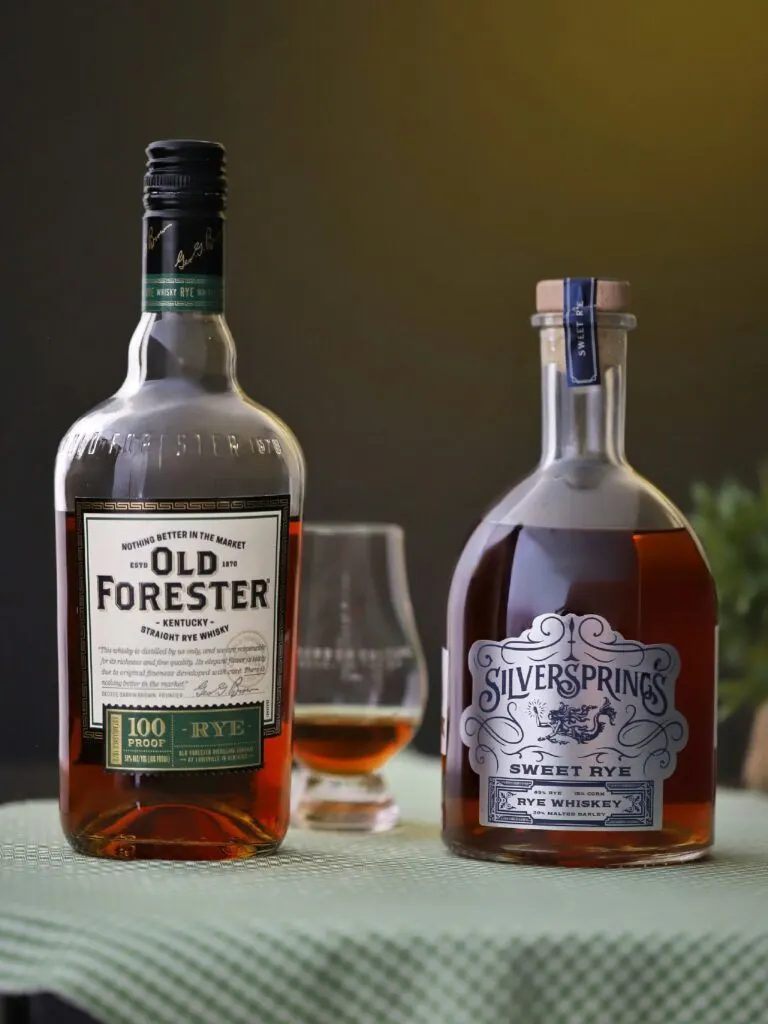
My first step was to reach out to a contact of mine that would be knowledgeable enough to guide me on my fact-finding journey. His forte is Old Forester/Brown Forman.
When I showed him the pictures and stats from this bottle, he said it might be possible that it was from Brown Forman, but the one thing made him hesitant was the proof. It was just too low to have come from Brown Forman.
Old Forester rye whiskey goes into the barrel at 125 proof and even though these barrels supposedly spent their life in Tennessee, it’s doubtful their proof would decrease by 15 full points. Undeterred, I ask him if maybe the answer was that these were barrels that Brown Forman made for Michter’s or if it was possibly from Michter’s.
He said no because Michter’s rye whiskey recipe, although never officially publicized, is very close to Woodford Reserve’s Rye Whiskey (known internally as “Old Watermill”) and is 53% rye / 33% Corn / 14% malt. Another dead end.
As we continued to banter, I found that K&L’s single barrel of Silver Springs had quite the impressive product description. Here it is, word for word:
This undeniably original expression comes one of Kentucky’s finest operations, while the contract prohibits the disclosure of its source and it is from one of the new distillers in the state, there are few out there who would argue that it’s not making some of Kentucky’s best rye whisky. This special mashbill was developed by the illustrious Ed Kohl, industry veteran and Keeper of the Quiach, a totally original take on the old recipe.
Distilled on the traditional Kentucky bourbon column still with a traditional doubler. Ed envisioned fa (sic) “sweet rye” with a higher-than-normal malt and corn content. This might give you some clues to the source as the great rye recipe he’s referring to when telling this story is from across the river and has migrated to Kentucky at certain choice establishments.
The mashbill -65% Rye, 15% Corn, 20% Malt-was distilled in a single batch and filled into newly charred 200L white oak barrels in fall of 2018 and transported to Ed’s warehouses in Tennessee. The barrels are stored in the hot and humid southern climate and this barrel was harvested in fall of 2022 at cask strength without chillfiltration.
No other high quality American whisky distiller is offering 4-year-old cask strength single barrel rye for less than $40. You may try to guess the source and we’re certain hope that you do as it’s one of the best values in rye whisky on the market today. Expect it to be a deeper, sweeter side of rye that still packs plenty of spicy character.
Okay, so let’s break it down. First off, that’s a terribly written excerpt. Whoever wrote it should be ashamed, not just because it’s full of errors but because it feels like it was designed to mislead more than guide.
But if there is one sentence I think I can decipher, it’s this: “This might give you some clues to the source as the great rye recipe he’s referring to when telling this story is from across the river and has migrated to Kentucky at certain choice establishments.”
My interpretation is that they’re hinting at the famous 95/5 rye recipe that has been distilled in Lawrenceburg, Indiana (which is right across the Ohio River from Kentucky). This recipe was created by the Godfather of Rye; Larry Ebersold.
He was the former Master Distiller at Seagrams and LDI but left in 2010 to start a consulting business to help new distilleries make rye whiskey. By my count, Larry has helped at least three Kentucky Distilleries create their rye whiskey recipes. These include Bardstown Bourbon Company, Rabbit Hole and New Riff.
He may also be responsible for Green River Distilling too (which is now owned by BBC). All 3 (4) of those distilleries use a 95/5 rye recipe. But wait, we’re looking at who distilled a 65/15/20 rye, not 95/5. None of them even list a recipe that mimics it.
The one that comes closest is New Riff‘s “Crystal Malt Bourbon” which uses a mash bill of 65% corn, 15% “T50” Crystal Malt and 20% malted rye.
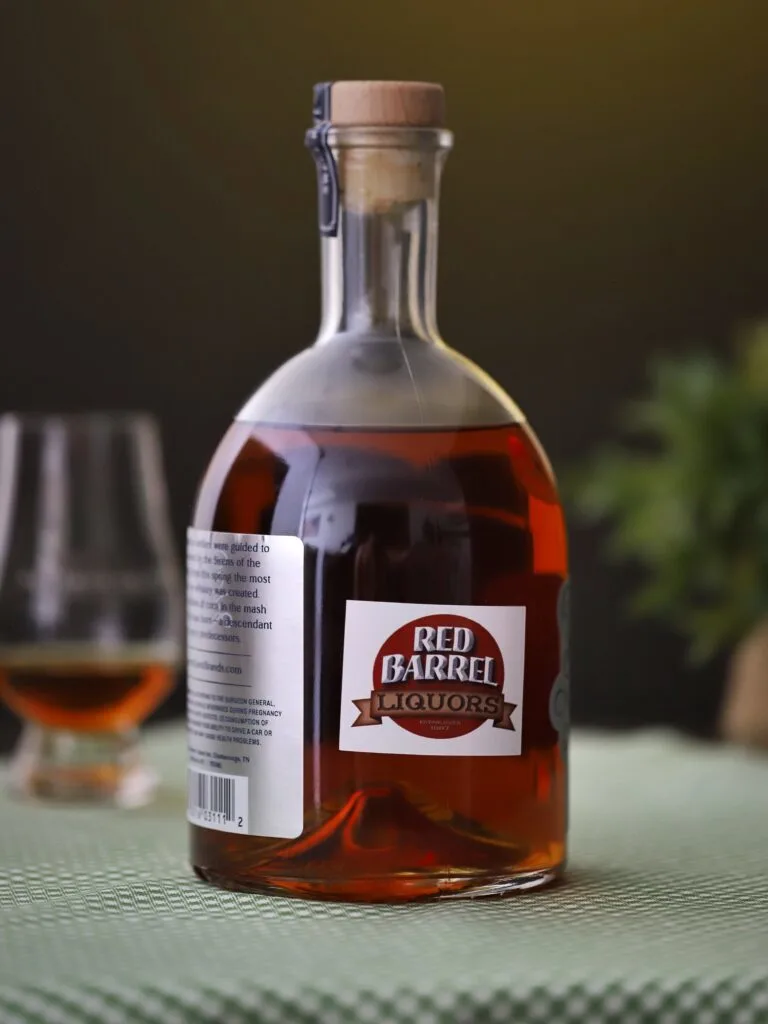
I had hit a wall that was stopping me from proceeding forward so I decided to circle back to the original lead of Brown Forman/Old Forester. If they didn’t make it, then who would make a knock-off OF Rye product and why?
Was it a former employee trying to troll their former employer? Was this person familiar with making the recipe and wanted to recreate it? Or was it made to throw off the people like me who are always investigating sourced whiskies?
Applying these questions to the list of personnel that constantly move around in the distilling scene brought a person named Cameron Talley. I found his LinkedIn Profile stated that he was a production manager at Brown Forman before moving to Rabbit Hole in August, 2016.
Knowing these dates are important because the timeline would make him still at Brown Forman as a Production Manager for at least a full year after they started to lay down barrels of their own 65/15/20 rye whiskey.
Less than two years after he went to Rabbit Hole, they laid down their first barrels of whiskey on May 3rd, 2018. Prior to that, Rabbit Hole had been getting their whiskey contract-distilled at New Riff. A friend told me this and I thought the information was a big secret.
But as I looked through Rabbit Hole’s social media, I realized that if you zoom in on pictures posted from 2018-2020, you can see many Rabbit Hole barrel heads are still marked with “DSP-KY-20016” on them – New Riff! Newer pictures show Rabbit Hole’s barrels branded with their own DSP which ends with 20045.
But this still doesn’t solve the mystery. The barrels used for Silver Springs Sweet Rye were distilled sometime in the first half of 2018.
This could make it either distillery if Cameron had requested it. Another clue may rest in the final proof of these bottles (between 108 and 112). This could indicate a lower barrel entry proof being used. New Riff uses 120 but Rabbit Hole uses 110.
Even though they were aged in Tennessee, that doesn’t mean that the whiskey inside would automatically rise in proof either. George Dickel products are “proof” of that (Pun #1). I am now leaning towards Rabbit Hole being the producer.
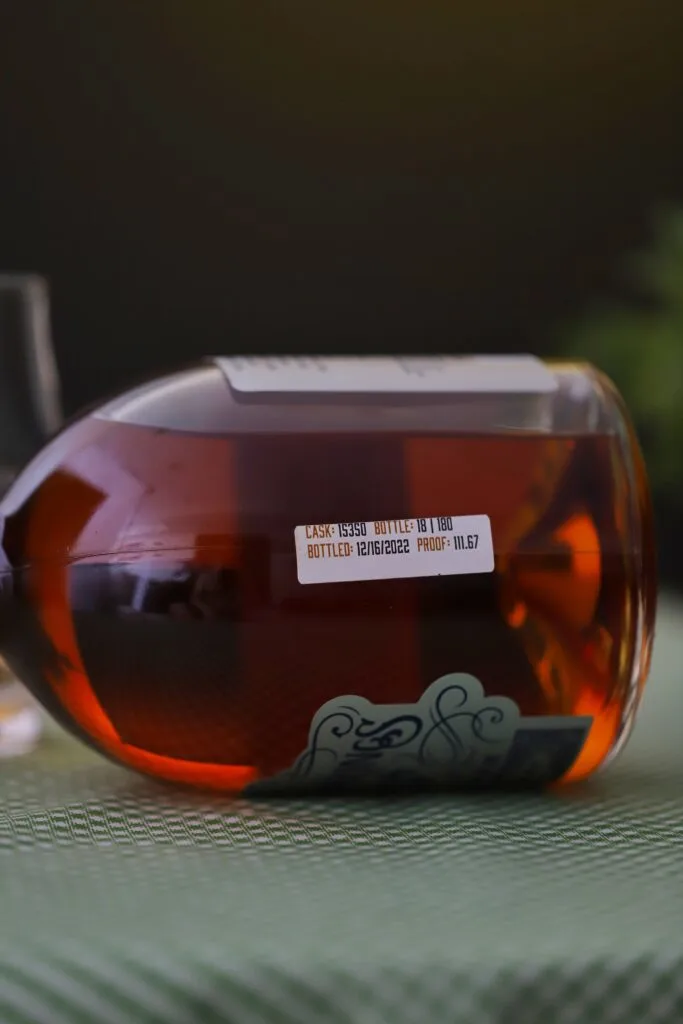
I wasn’t confident enough on my theory yet, so I decided to venture down one more rabbit hole (Pun #2). I wanted to see if I could glean anything from the various numbers that came on the box label. The only one that might hold a clue was the number sequence they used as a “Cask Number.”
Why was this five digit number used if the barrels that Ed Kohl (the man who sourced these barrels) sourced were from a limited run of one days’ worth of distilling? My bottle from Red Barrel said it was Cask 15350 and K&L lists theirs as Cask 15321.
I know that distilleries are keen on numbering their barrels not just with Lot numbers, but also individually. MGP/LDI/Seagrams barrels were notorious for theirs.
If you’ve ever looked at old Smooth Ambler, Belle Meade, Smoke Wagon (only the 5000s and 6000s) and even Boone County single barrels, you’ll realize that all of the numbers correspond with each other. This is because LDI wrote those numbers on each barrel with a paint pen from 2005 to 2007.
Those who are REALLY into MGP already know that those barrel numbers will correspond to the year (and usually month) that the barrels were filled. So I spent a full day scanning thousands of pictures from Rabbit Hole and New Riff’s social media to see if they had any identifying numbers on pictures of barrel heads, but nothing was matching up.
Then I decided to look at Bardstown Bourbon Company’s social media just for the hell of it. That’s when I started to notice a correlation between “Barrel Fill Date” and “Barrel Serial Number.”
There was a string of pictures showing that the barrel fill dates were marked with a YY/M/DD sequence. For example; 20C31 would mean that the fill date was March 31, 2020. Anyway, I found a string of barrels with the corresponding fill dates and serial numbers:
- Fill Date 18C21, Serial Number 13682
- Fill Date: 18C22, Serial Number: 13919
- Fill Date 18C27, Serial Number 14809 (I also found Serial Numbers 14814, 14824 and 14825 for this fill date)
- Fill Date 19G31, Serial Number 61230
Seeing this pattern got me really excited. I knew that the barrels that were sourced for Silver Springs Sweet Rye were distilled sometime in the first half of 2018, and now my serial numbers from Red Barrel and K&L started to make sense.
The fill dates and the serial numbers seem to imply that a little over 1,000 barrels were filled over the course of six days between 21 March, 2018 and 27 March, 2018. That would put the two Silver Springs Cask (serial) numbers that I had – 15321 (for K&L) and 15350 (for Red Barrel) – in line with being filled sometime in April, 2018.
Could Silver Springs Sweet Rye be a Bardstown Bourbon Company product then?! Sadly, my dreams came crashing down when a store I had previously reached out to called The Tilted Bottle told me their Silver Springs single barrel Cask Number was 12383.
My theory had been debunked. Silver Springs barrels were the product of a single batch and if I’m taking their word on that, then the separation between the cask numbers eliminate BBC as the bonafide source.
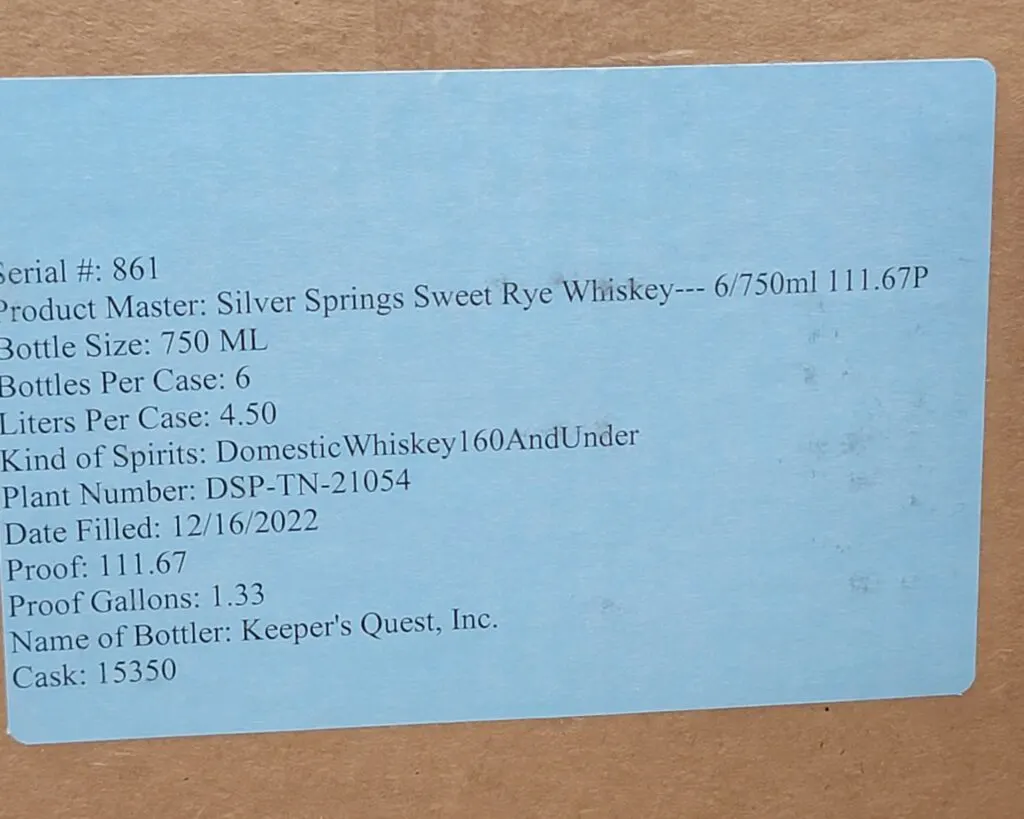
In conclusion, I’ve got nothing concrete to tell you. The numbers tell me it’s Rabbit Hole. My gut and the price of the bottle tells me it’s New Riff and the fact that both of those distilleries don’t have experience with corn in their rye whiskey mash bill tell me that it could be Bardstown Bourbon Company. I have exhausted all possible avenues to find a source except just tasting the whiskey.
Maybe the flavor profile will tell me who it is. I’ll also sample an Old Forester 100 Proof rye whiskey alongside it just to see if I can glean anything from these identical mash bills. As usual, I sampled them both neat in an glencairn.
Silver Springs Sweet Rye
Nose: Just like the label says, this rye smells very sweet. Notes of gingerbread, toasted oak, No-Bake cookies and Heath Bar make a really great first impression.
There are lots of baking spices, which hint to the high rye content. Along those lines are lemon candies (possibly just citrus in general) and a faint amount of pine. I think the most surprising aspect of the nose is just how much oak shows through for a whiskey this young. It’s much better than it has any business being.
Palate: The flavors upon the first sip lean mostly towards herbal notes like mint and oregano and sweet caramel. There’s a lot to like about this rye whiskey as I find a lot of sweet citrus peel, persimmon pie and flat ginger ale.
The nose may have smelled more like a bourbon but the palate reminds me that this is a true rye whiskey. As the session goes on, Red Hots candies are more noticeable along with the faint flavor of cigar wrapper.
Finish: Just like the palate, the finish remains sweet with a smattering of herbal notes all the way until the end. It’s also decently long. I miss the oak and tobacco notes at the end, making me realize that this is just a four year old rye whiskey after all.
I enjoy the flat orange soda and root beer notes the most. They keep me anticipating the next sip. The mint also makes its way to the finish disguised as a very small amount of mouthwash.
Score: 7.9/10
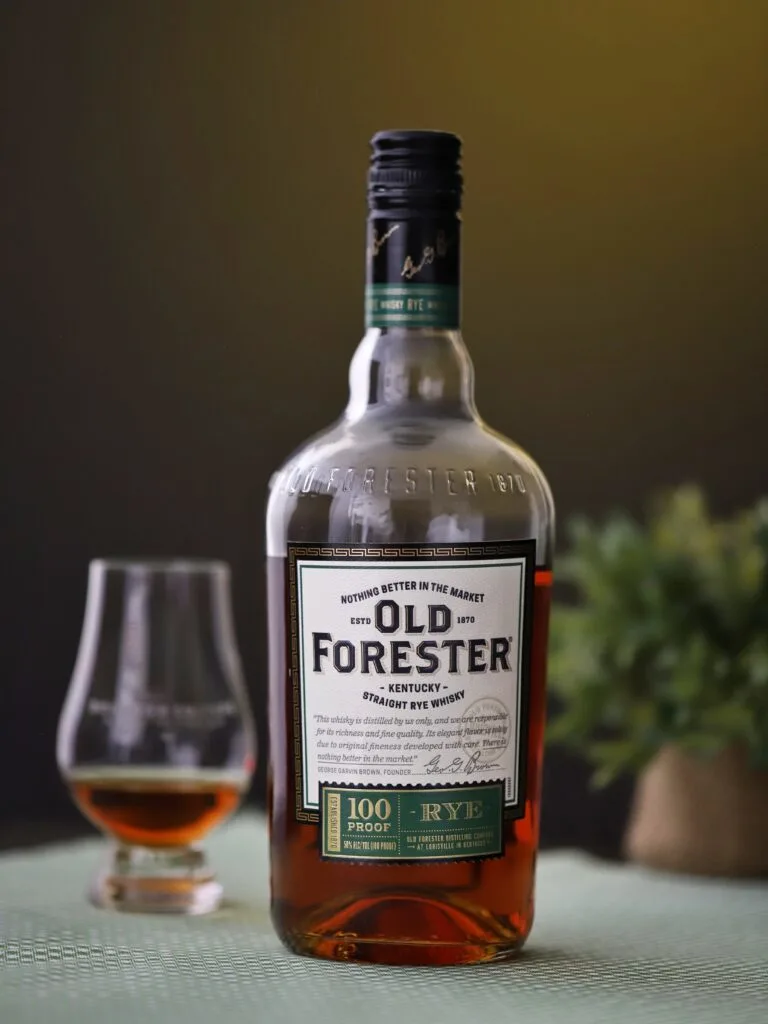
Old Forester 100 Proof Rye Whiskey
Nose: The nose on this Old Forester has a nice amount of fruit within. I can detect apples, pears and bananas. The sweetness is more reminiscent of honey than caramel like on the Silver Springs. I get the telltale scent of cinnamon and a faint bit of mint that tells me that this is a rye whiskey.
Overall, the nose feels a bit sharper than the sweeter and more rounded Silver Springs. There’s also a little bit of youth that I’m able to perceive that seems somewhat astringent.
Palate: The first sip shows off similar notes to the nose. Honey-dipped fresh fruit and a bit of spice and heat from black pepper and chili powder.
The heat is manageable, but I’m surprised to find it’s along the same lines as the Silver Springs which is over 11 proof points hotter. This Old Forester also has more floral flavors rather than herbal. The mouthfeel isn’t quite as heavy as the Silver Springs (once again, something I expected with the proof difference).
But one thing I am aware of is how much rougher around the edge it appears. I don’t need for my ryes to be soft-sipping to enjoy them, but there is something slightly more enjoyable about the Silver Springs than the Old Forester.
Finish: Herbal notes swing back into action on the finish with lingering flavors of mint and tarragon. I also get more baking spices like cinnamon, clove and star anise. The finish makes each sip end on a lighter and more refreshing note than the Silver Springs. Very little tannins are present.
Score: 6.8/10
Conclusion
This conclusion is going to center almost entirely around the Silver Springs Sweet Rye, which I found to be an absolutely incredible bottle for the price. It makes compromises at every turn, but honestly that’s its greatest strength.
It’s sweet like a bourbon but doesn’t sacrifice its rye whiskey character. The heat was perfectly controlled and the proof felt like the absolute perfect spot to be bottled at (I find 110-115 to be my sweet spot anyway).
Honestly, this is a problem with the Old Forester rye whiskies I’ve tried. The 100 proof needs a little more “oomph” and the barrel strength is lacking a bit on sweetness while leaning too hard into the tannins. A 110-115 proof Old Forester product could be very close to the Silver Springs.
After multiple sessions with the Silver Springs, I still haven’t made up my mind about which distillery made it. Maybe in the end it just doesn’t matter Whiskey doesn’t have to be identified to be enjoyed; but it sure makes me feel better knowing who to give the kudos to when I’m drinking it.
Honestly, whoever let these barrels go to Ed Kohl was crazy for doing so. Whether or not it was New Riff, Rabbit Hole or BBC, this rye whiskey was going to be a winner no matter who decided to bottle it.

I’ll sing Silver Springs one last bit of praise before I end this review by drawing a comparison to one of my more favorite ryes out there, Michter’s Barrel Strength Rye.
There are many secrets to Michter’s success but their low barrel entry proof (103) allows all of their whiskies (but especially their rye) to become this wonderfully sweet and complex liquid at the end of its aging. Silver Springs reminds me a lot of that line of Michter’s in the same way.
Had Keeper of the Quiach (the brand behind Silver Springs) just allowed these barrels to mature a few more years, they might have a world-class rye whiskey on their hands and be able to fetch whatever price they wanted.
I can only hope that Ed and his team didn’t bottle all of these barrels up and secretly has a plan for the remainder in the coming years.
That would be a surprise every bit as sweet as the rye whiskey in this bottle. And if you see any of these bottles on the shelf, do not hesitate to buy them. They are absolutely worth every penny.
Featured Products
- Neat Traveler

- View Larger
- Description:The Aged & Ore Neat Traveler is a complete travel kit for spirits. We combined our widely praised Neat Glass with one of our 3oz Flight Bottles and housed them together in a custom EVA travel case. Perfect for a night away with your favorite pour. The tie
- Bottle Flight

- View Larger
- Description:The Aged & Ore Bottle Flight is a premium set of 4 custom silicone wrapped glass bottles designed to transport and share samples of your favorite spirits. The flight bottles come in a custom EVA travel case that fits perfectly in any small bag. An Aged &
- Travel Bundle
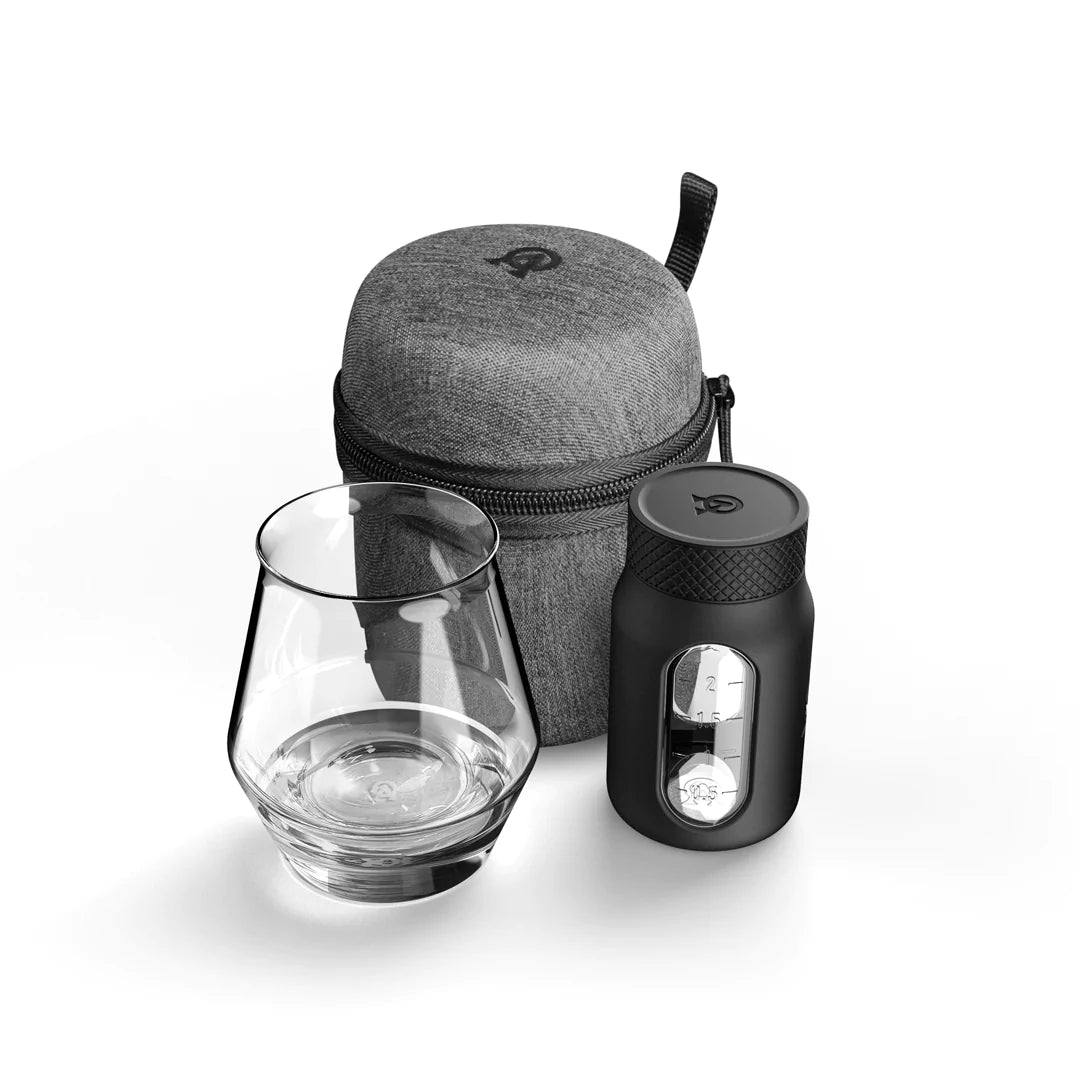
- View Larger
- Description:This Bundle combines two of our crowd favorite products, creating the ultimate travel bundle to bring along your favorite spirits and glassware. Bundle Includes: Neat Traveler (Gray) Bottle Flight (Gray) Note: This bundle is only available in gray and col
*Bourbon Culture is reader-supported. When you buy through links on our site, we may earn an affiliate commission.
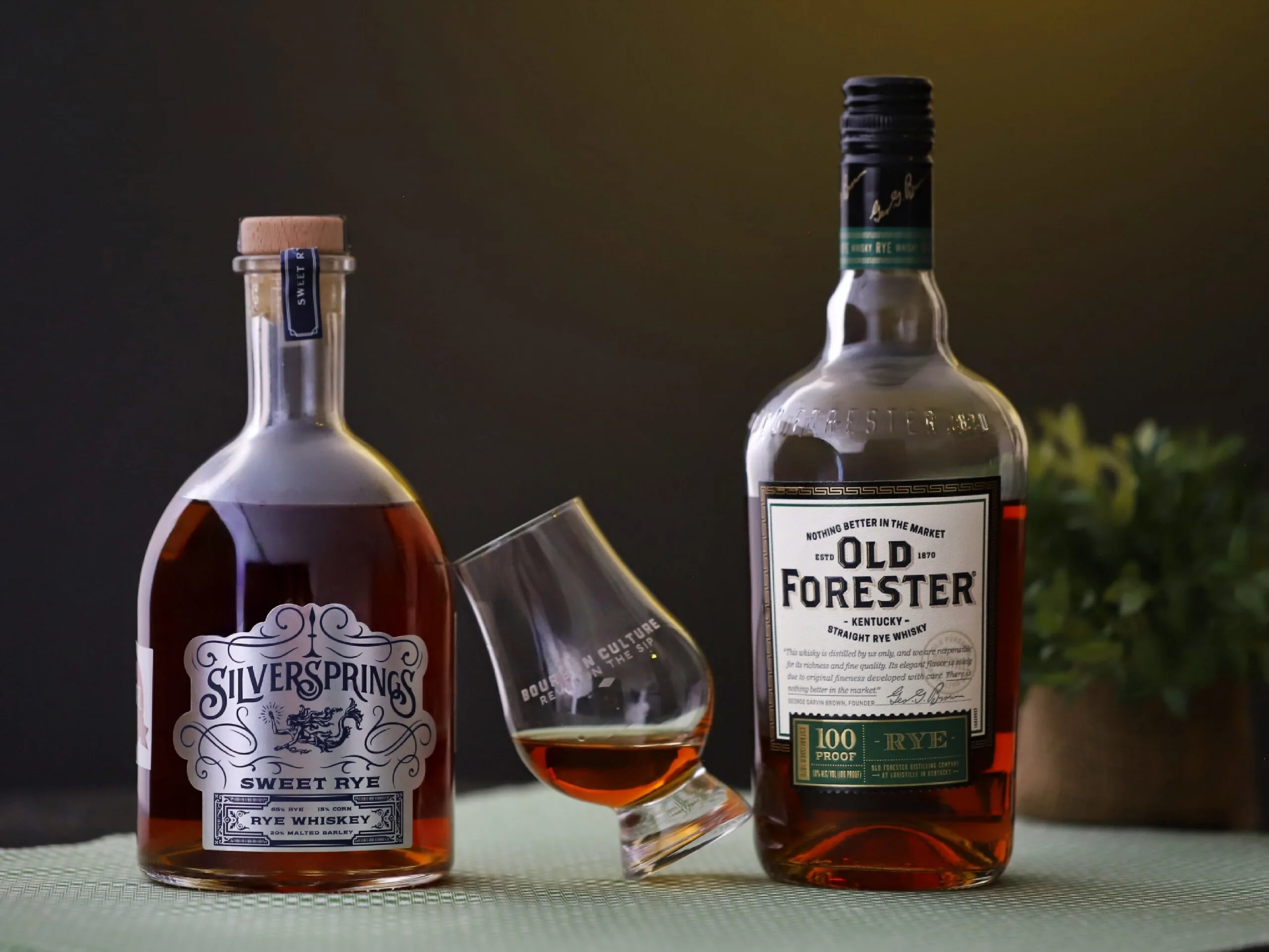
BG
Wednesday 7th of June 2023
Bottle was recommended by a lady standing in the aisle in a liquor store in Chattanooga on Monday. I did purchase the bottle. I did open the bottle last night. I do agree with the review;
Buy it if you can find it. You won't be disappointed. I'm a big Willett Rye person, so this was "different" and enjoyable with a whole new sweetness angle not usually found in a rye.
David
Wednesday 17th of May 2023
I just picked up a bottle in Texas at Spec's, and the barrel number on this one is also 12383. Very interesting whisky!